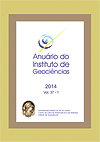Bioremediation of the Soils Contaminated with Cadmium and Chromium, by the Earthworm Eisenia fetida
DOI:
https://doi.org/10.11137/2014_2_216_222Keywords:
Chromium, Cadmium, Eisenia fetida, Bioremediation.Abstract
One of the most important environmental problems in the world is the soils contamination by heavy metals in the industrial areas, and especially the contamination of the agricultural lands. The use of earthworms to bioremediate the soils results in reducing the pollutants concentration through a bioaccumulation mechanism on the contaminants in the earthworm's body. Hence, the present study aimed to prove the biological effectiveness of Eisenia fetida earthworms in bioremediation the soils contaminated with chromium and cadmium. Concentration of chromium and cadmium pollution in soil was determined to be 0.04 mg/g and 0.08 mg/g respectively. 30 worms were added to 500 g soil samples. Chromium and cadmium concentration in soil and in the body of worms was measured at two time periods of 21 and 42 days. To measure the concentration of chromium and cadmium we used ICP spectrometry. Software in usage was SPSS version 17. There was a significant correlation between the reduction of chromium and cadmium metals in the soils and the accumulation of chromium and cadmium metals in the worm's body. A significant decline of chromium levels of the soil was observed in the days 21 and 42 during the study compared to initial amount of 0.1 mg/g. on the other hand chromium concentration of the soil decreased from 0.14 mg/g to 0.1 mg/g after 42 days. Comparison of mortality in two different time periods showed that by passing the time and by increase in soil chromium and cadmium concentrations the death toll of worms rises. The increased mortality of worms in the soil at a concentration of 0.08 mg/g of chromium, say that using the worms for bioremediation is not recommended at such concentration of chromium but using the worms for the removal of cadmium at concentrations of 0.04 mg/g and 0.08 mg/g in the soil is recommended.Downloads
Download data is not yet available.
Downloads
Published
2017-02-15
How to Cite
Aseman-Bashiz, E. (2017) “Bioremediation of the Soils Contaminated with Cadmium and Chromium, by the Earthworm Eisenia fetida”, Anuário do Instituto de Geociências. Rio de Janeiro, BR, 37(2), pp. 216–222. doi: 10.11137/2014_2_216_222.
Issue
Section
Article
License
This journal is licensed under a Creative Commons — Attribution 4.0 International — CC BY 4.0, which permits use, distribution and reproduction in any medium, provided the original work is properly cited.















